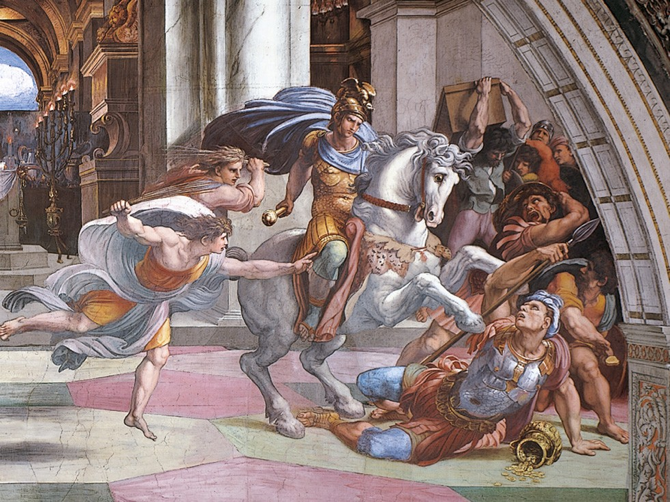
The Arch of Titus is one of the most well-known ancient monuments concerning Jewish history.
Built in 82 CE, it depicts the victorious procession of Roman troops carrying Jewish temple vessels, including of course the golden Menorah.
But there was once another arch.
🧵
1/9


Built in 82 CE, it depicts the victorious procession of Roman troops carrying Jewish temple vessels, including of course the golden Menorah.
But there was once another arch.
🧵
1/9



The Arch was part of a broader visual & ideological program intended to legitimate & bolster the new Flavian dynasty. The defeat of the Jews was therefore inflated, depicted not as a relatively easily won war over a revolting province, but the conquest of a foreign territory.
2
2
We see the development of this program in the coins minted to commemorate the victory. The legend on the more common coins reads "Judea Capta," Judea is conquered, which often depicted a woman, probably the personified Judea, mourning.
3
3

A rarer coin reads Judea Recepta, "recaptured." Acc. to the experts, this legend indicated "the re-subjugation of an old province..precisely what one would have expected after a revolt.." (c.f. Asia Recepta & Armenia capta coins). But conquered sounded better than recaptured.
4


4



The Romans also erected a "temple of peace," in which the temple vessels were displayed. The colosseum was built with the funds from these victories. Roman victory and imperial benefaction of public amenities coincide.
For more, see @SarahEBond:
For more, see @SarahEBond:
https://twitter.com/SarahEBond/status/1122146058988138496

The Romans also collected a "Jew tax (fiscus judaicus)," about which we have some outstanding collection records from Egypt dating into the second century. This was undoubtedly an onerous additional tax to pay.
6
6
Within this program, one arch was not enough! Reports tell of a 2nd arch with a longer inscription reading: The senate & the people of Rome to the emperor Titus..he subdued the Jewish people & destroyed the city of Jerusalem, which all..before him had..attacked without success..
Recent excavations in the Circus Maximus have uncovered another arch which the archaeologists say is the lost Arch.
telegraph.co.uk/news/worldnews…
8

telegraph.co.uk/news/worldnews…
8


The Arch of Titus was therefore one piece in a wide-ranging visual & ideological program that deployed the victory over the Jews to bolster a fledgling dynasty. It meant that real Jews across to empire suffered, through taxes & imagery which emphasized their subordination.
Fin
Fin
For the Judea Recepta/Capta discussion see: academia.edu/5972949/Gambas…. For the polychromatic Arch of Titus, see academia.edu/34658470/The_A…
• • •
Missing some Tweet in this thread? You can try to
force a refresh










